C数据结构:二叉树(下)
1.二叉树递归结构遍历
2.例题
3.二叉树的性质
1.二叉树递归结构遍历
我们先创建一个如下图所示的二叉树。
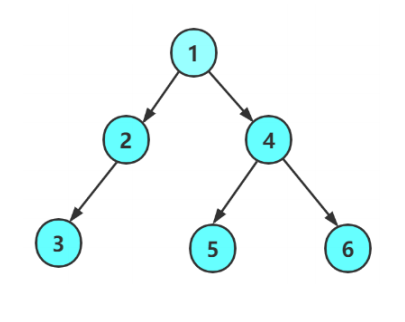
typedef int BTDataType;
typedef struct BinaryTreeNode
{BTDataType data;struct BinaryTreeNode* left;struct BinaryTreeNode* right;
}BTNode;
BTNode* BuyNode(int x)//创建节点
{BTNode* node = (BTNode*)malloc(sizeof(BTNode));if (node == NULL){perror("malloc fail");return NULL;}node->data = x;node->left = NULL;node->right = NULL;return node;
}
BTNode* CreatBinaryTree()//创建二叉树
{BTNode* node1 = BuyNode(1);BTNode* node2 = BuyNode(2);BTNode* node3 = BuyNode(3);BTNode* node4 = BuyNode(4);BTNode* node5 = BuyNode(5);BTNode* node6 = BuyNode(6);node1->left = node2;node1->right = node4;node4->left = node5;node4->right = node6;node2->left = node3;return node1;
}
前序遍历
前序遍历即是按照 根、左子树、右子树 的顺序,通过递归结构来遍历。用N代表空树,根据下图可得到前序遍历的序列:1 2 3 N N N 4 5 N N 6 N N

前序代码实现:
void PrevOrder(BTNode* root)//前序
{if (root == NULL){printf("N ");return;}elseprintf("%d ", root->data);PrevOrder(root->left);PrevOrder(root->right);
}

中序遍历
中序遍历即是按照 左子树、根、右子树 的顺序遍历。遍历序列:N 3 N 2 N 1 N 5 N 4 N 6 N 。

中序代码实现:
void InOrder(BTNode* root)//中序
{if (root == NULL){printf("N ");return;}else{InOrder(root->left);printf("%d ", root->data);InOrder(root->right);}
}
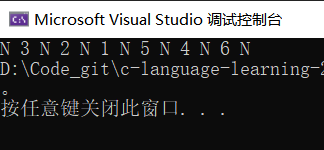
后序遍历
后序遍历即是按照 左子树、右子树、根 的顺序遍历。遍历序列:N N 3 N 2 N N 5 N N 6 4 1 。

后序代码实现:
void BackOrder(BTNode* root)//后序
{if (root == NULL){printf("N ");return;}else{BackOrder(root->left);BackOrder(root->right);printf("%d ", root->data);}
}
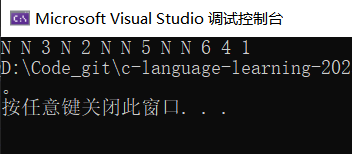
二叉树的销毁
销毁二叉树应选择后序,若选择前序,销毁根后就找不到左右子树;选择中序,销毁根后就找不到右子树,前序、中序都会导致内存泄漏。所以应先销毁左右子树,再销毁根。
void TreeDestroy(BTNode* root)//销毁
{if (root == NULL){return;}TreeDestroy(root->left);TreeDestroy(root->right);free(root);
}
2.例题
解决二叉树的相关题目,关键是学会拆分成左右子树和递归来解决。
求二叉树节点个数
二叉树的节点是由左子树的节点、右子树的节点和根节点组成,写一个求二叉树节点个数的函数,用这个函数求左右子树的节点个数,再加上根节点,即求得整个二叉树的节点个数。
int TreeSize(BTNode* root)//求二叉树节点个数
{return root == NULL ? 0 : TreeSize(root->left) + TreeSize(root->right) + 1;
}
还以是下面的二叉树为例:


求叶数
二叉树的叶节点可以看作叶节点左右子树为空树,所以一个节点左右子树为空树,这个节点就是叶节点。
int TreeLeafSize(BTNode* root)//求叶数
{if (root == NULL)//空树return 0;if (root->left == NULL && root->right == NULL)//叶节点return 1;return TreeLeafSize(root->left) + TreeLeafSize(root->right);
}
求树的高度
二叉树的高度为最大层数,可以把二叉树拆分成左右子树,再分别求左右子树的高度,比较后得到高度最大的,再加上根节点,就求出了二叉树的高度。
int TreeHeight(BTNode* root)//树的高度
{if (root == NULL)return 0;BTDataType leftHeight = TreeHeight(root->left);BTDataType rightHeight = TreeHeight(root->right);return leftHeight > rightHeight ? leftHeight + 1 : rightHeight + 1;
}
二叉树第k层的节点个数
例如下图的一颗二叉树,若求第3层的节点数,即k=3,可以发现,对于第一层,k=3;对于第二层,k=2;对于第三层,k=1。所以,同样拆分成左右子树,每次递归时通过k-1调整k,当k=1时就返回1,最后再把左右子树求得的第k层的节点数加起来。
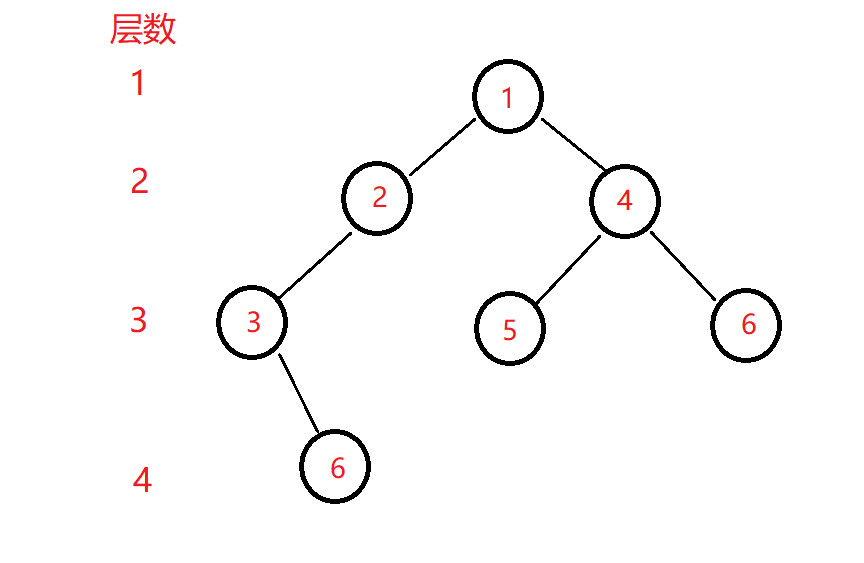
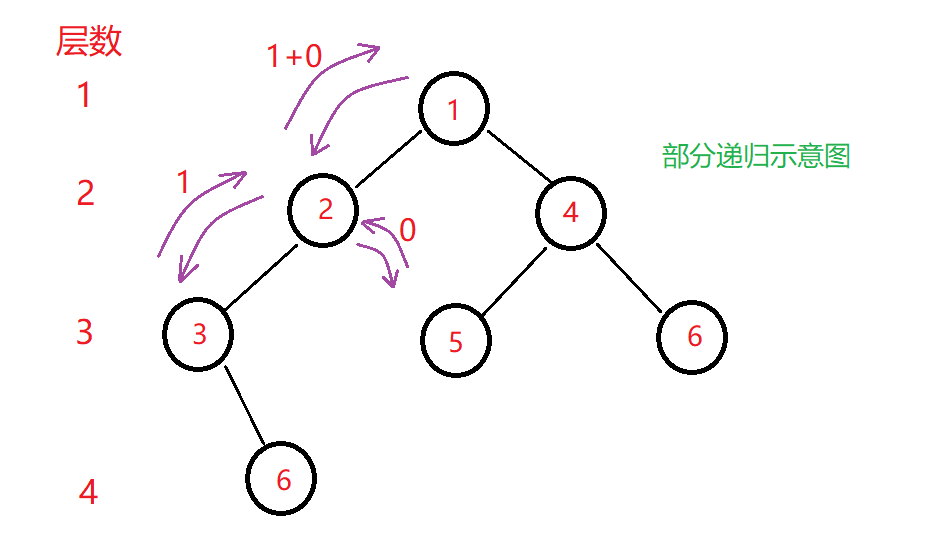
int TreeLevelKSize(BTNode* root, int k)//二叉树第k层节点个数
{if (root == NULL){return 0;}if (k == 1){return 1;}return TreeLevelKSize(root->left, k - 1) + TreeLevelKSize(root->right, k - 1);
}
查找值为x的节点
解决这个问题同样要拆分左右子树和递归,一颗二叉树可能有多个值为x的节点,但函数的返回值只能有一个,当递归遍历找到值为x的节点时,就返回该节点。
BTNode* TreeFindX(BTNode* root, BTDataType x)//查找值为为x的节点
{if (root == NULL){return NULL;}if (root->data == x){return root;}BTNode* ret1=TreeFindX(root->left, x);if (ret1)return ret1;BTNode* ret2 = TreeFindX(root->right, x);if (ret2)return ret2;return NULL;
}
前序遍历二叉树并返回数组
前序遍历一颗二叉树,将二叉树的数据放到数组中并返回数组。
返回数组就需要返回指向数组的指针和数组长度,而数组长度就为二叉树的节点个数。
int TreeSize(BTNode* root)//求二叉树节点个数
{return root == NULL ? 0 : TreeSize(root->left) + TreeSize(root->right) + 1;
}
void preOrder(BTNode* root,int* a,int* pi)//前序遍历二叉树并把数据放入数组
{if(root==NULL)return;a[(*pi)++]=root->data;preOrder(root->left,a,pi);preOrder(root->right,a,pi);
}
int* preOrderTraversal(BTNode* root,int* returnSize)
{*returnSize=TreeSize(root);//数组长度int* a(int*)malloc((*returnSize)*sizeof(int));//开辟数组int i=0;preOrder(root,a,&i);return a;
}
访问数组需要知道数组长度,C语言不支持函数返回数组,我们期望经过函数处理数组后得到对应的数组长度,所以我们在主函数定义returnSize=0,将returnSize的地址传入函数,因为如果要通过函数改变主函数中变量的值,就要传址调用,这样就得到了数组长度。
根据前序遍历构建二叉树并输出中序遍历
输入前序遍历的字符串,以此建立一个二叉树,再输出中序遍历结果。#表示空树。
这道题的关键是根据前序遍历构建二叉树,所以要前序遍历函数来写创建二叉树的函数。
BTNode* CreateTree(char* str,int* pi)
{if(str[(*pi)]=='#'){(*pi)++;return NULL;}BTNode* root=(BTNode*)malloc(sizeof(BTNode));root->data=str[(*pi)++];root->left=CreateTree(str,pi);root->right=CreateTree(str,pi);return root;
}
void InOrder(BTNode* root)
{if(root==NULL){printf("#");return;}InOrder(root->left);printf("%c",root->data);InOrder(root->right);
}
int main()
{char str[100];scanf("%s",str);printf("\n");int i=0;BTNode* root=CreateTree(str,&i);InOrder(root);printf("\n");return 0;
}
例如,输入前序序列abc##de#g##f###

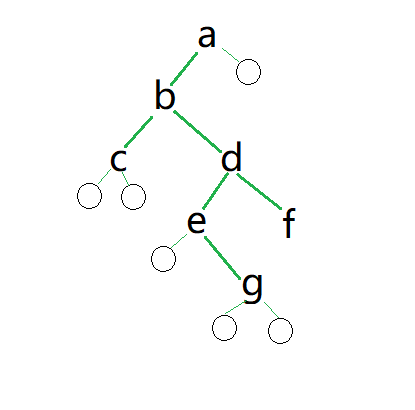
3.二叉树的性质
-
非空二叉树的第 i 层最多有2^(i-1)个节点。
-
高度为h的二叉树的最大节点数为2^(h) - 1。
-
对任意二叉树,度为0的叶有n0个,度为2的节点有n2个,满足n0 = n2 + 1 。
若一颗完全二叉树有767个节点,则叶的个数是多少?
我们设度为0的节点有N0个,度为1的节点有N1个,度为2的节点有N2个,则N0+N1+N2=767,又在完全二叉树中,度为1的节点数要么为0,要么为1,因为N0 = N2 + 1,所以2N0 + N1 - 1 = 767 ,767为奇数,所以2N0 + N1 - 1也应为奇数,2N0显然为偶数,所以N1应为0,这样等式左边才为奇数,所以最终N0为384,即叶数为384。
拙作一篇,望诸位同道不吝斧正。
)




![[Android] 人体细胞模拟器1.5](http://pic.xiahunao.cn/[Android] 人体细胞模拟器1.5)




 统计容器中特定元素出现次数)
的系统化梳理)
)


)



